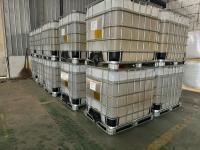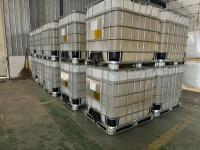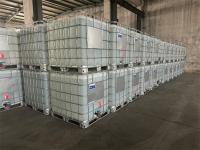Our Products
Product Center / polyamine factory|polyamine manufacturer|polyamine coagulant from China

Polyamines are organic compounds containing two or more amino groups, and they are widely used in industrial, agricultural, environmental, and biological applications. Among the most commonly used polyamines are ethylenediamine, diethylenetriamine, triethylenetetramine, and various polymeric polyamines. In industrial contexts, the term "polyamine" often refers to water-soluble cationic polymers, especially those used in water treatment and paper manufacturing. Polyamines have exceptional properties such as high cationic charge density, water solubility, thermal stability, and strong interaction with negatively charged substances, making them highly versatile.
This article explores the applications of polyamines in various sectors and highlights their significance, mechanisms, and practical advantages. The word count is approximately 1080 words.
Applications of Polyamine
1. Water Treatment
One of the most significant applications of polyamines is in water and wastewater treatment. Polyamines act as coagulants and flocculants due to their strong positive charge, which helps neutralize negatively charged colloidal particles in water.
Applications in water treatment include:
-
Coagulation: Polyamines destabilize suspended particles, bacteria, viruses, and dissolved organic substances by neutralizing surface charges.
-
Flocculation: After coagulation, polyamines help form flocs by bridging smaller particles into larger aggregates, making them easier to remove via sedimentation or filtration.
-
Sludge dewatering: Polyamines aid in reducing water content from sewage and industrial sludge, enhancing the efficiency of mechanical dewatering systems like filter presses or centrifuges.
-
Color removal: In textile and dye industries, polyamines are highly effective at removing color by reacting with anionic dye molecules.
Polyamines outperform traditional inorganic coagulants (like alum or ferric chloride) by working over a wider pH range, producing less sludge, and exhibiting lower corrosivity.
2. Paper and Pulp Industry
Polyamines play a crucial role in the paper manufacturing process. They are used for various purposes ranging from improving paper strength to enhancing the retention of fillers and fibers.
Key uses in the paper industry include:
-
Wet-end retention aids: Polyamines increase the retention of fibers, fillers, and fines during the sheet-forming process, improving paper quality and reducing waste.
-
Dry strength resins: Polyamine-based resins are used to improve dry strength properties of paper, making it more durable and tear-resistant.
-
Pitch and stickies control: Polyamines bind to pitch and sticky contaminants in recycled paper, preventing them from depositing on papermaking equipment.
-
Size press additives: They can be applied at the size press to enhance the surface strength of the paper and improve ink holdout for printing.
Their high cationic charge makes polyamines particularly effective at interacting with the anionic components of pulp and paper systems.
3. Oil and Gas Industry
Polyamines are widely used in oilfield applications, particularly in drilling fluids, enhanced oil recovery (EOR), and scale inhibition.
Applications include:
-
Corrosion inhibitors: Polyamines adsorb onto metal surfaces in pipelines and equipment, forming a protective film that prevents corrosion.
-
Drilling mud additives: Polyamines are used as clay stabilizers and shale inhibitors in water-based drilling fluids, preventing shale swelling and dispersion.
-
Scale control: They prevent the formation of scales like calcium carbonate, barium sulfate, and strontium sulfate, which can clog pipelines and reduce equipment efficiency.
-
Emulsion breakers: Some modified polyamines are used in demulsifiers to separate water from oil emulsions during crude oil processing.
Polyamines contribute to operational efficiency, safety, and equipment longevity in harsh oilfield environments.
4. Textile and Dyeing Industry
Polyamines are used in the textile industry to modify fibers, improve dye uptake, and assist in wastewater treatment.
Key applications include:
-
Dye-fixing agents: Polyamines interact with negatively charged dye molecules, anchoring them more firmly to fabric fibers, especially in cotton and polyester blends. This improves color fastness and wash resistance.
-
Antistatic agents: Used in synthetic fabrics to reduce static buildup during manufacturing and wear.
-
Softening agents: Polyamine-based softeners provide a smooth hand feel and enhance the comfort of finished garments.
-
Wastewater treatment: In dyeing units, polyamines are used to remove residual dyes and suspended solids from effluent water.
They are favored for their low toxicity, biodegradability, and compatibility with various fiber types.
5. Agriculture
Polyamines have biological functions in plants and are also applied in agricultural formulations.
Applications include:
-
Plant growth promoters: Polyamines like putrescine, spermidine, and spermine are naturally occurring in plants and are applied exogenously to enhance growth, flowering, and stress resistance.
-
Pesticide formulations: Polyamines are used as adjuvants in pesticides to enhance the adhesion and penetration of active ingredients.
-
Soil conditioners: Polyamines improve soil structure by promoting aggregation and enhancing water retention.
-
Fertilizer stabilizers: They are used to reduce nutrient loss by forming complexes with nitrogen, phosphorus, and micronutrients, improving their bioavailability.
Their multifunctional nature supports sustainable farming practices and crop productivity.
6. Mining and Mineral Processing
In the mining industry, polyamines serve critical functions in ore beneficiation and mineral separation processes.
Common uses include:
-
Flotation reagents: Polyamines are used as collectors or depressants in the froth flotation process to selectively separate valuable minerals from gangue.
-
Dust suppression: Polyamine-based dust control agents are sprayed on mining roads and surfaces to reduce airborne particulate matter.
-
Water clarification: Used in tailing ponds to flocculate suspended solids and recover clean water for reuse.
Polyamines improve process efficiency and reduce environmental impact in mineral extraction operations.
7. Paints, Coatings, and Adhesives
Polyamines are important components in the formulation of epoxy resins, paints, and adhesives.
Key roles include:
-
Epoxy curing agents: Polyamines serve as hardeners for epoxy systems, promoting crosslinking that enhances the mechanical strength and chemical resistance of coatings.
-
Adhesives: Polyamine-modified adhesives exhibit superior bonding performance across a variety of substrates including metals, wood, and plastics.
-
Corrosion-resistant coatings: In marine and industrial environments, polyamine-cured coatings provide long-term protection against corrosion, UV radiation, and abrasion.
Their thermal stability and chemical resistance make polyamines indispensable in high-performance coating systems.
8. Cosmetics and Personal Care
Polyamines are used in cosmetic formulations due to their conditioning, moisturizing, and pH-stabilizing properties.
Applications include:
-
Hair conditioners: Polyamines reduce frizz and static, improve combability, and enhance hair softness by forming a protective film on the hair shaft.
-
Skin care products: Their hygroscopic nature helps retain skin moisture and improve texture.
-
Emulsifiers: Some polyamines stabilize oil-in-water emulsions in lotions and creams, ensuring consistency and extended shelf life.
They are preferred in formulations for sensitive skin due to their low irritation potential.
9. Biotechnology and Pharmaceuticals
Polyamines also have growing importance in biotechnology, drug delivery, and genetic engineering.
Notable applications:
-
Gene transfection agents: Cationic polyamines are used to deliver DNA or RNA into cells by forming complexes with nucleic acids and facilitating membrane transport.
-
Protein purification: Polyamines interact with negatively charged proteins, aiding in selective precipitation and purification processes.
-
Drug stabilization: Used to stabilize protein-based drugs or vaccines by preventing aggregation.
Their biocompatibility and ability to interact with biomolecules make polyamines highly valuable in life sciences.





